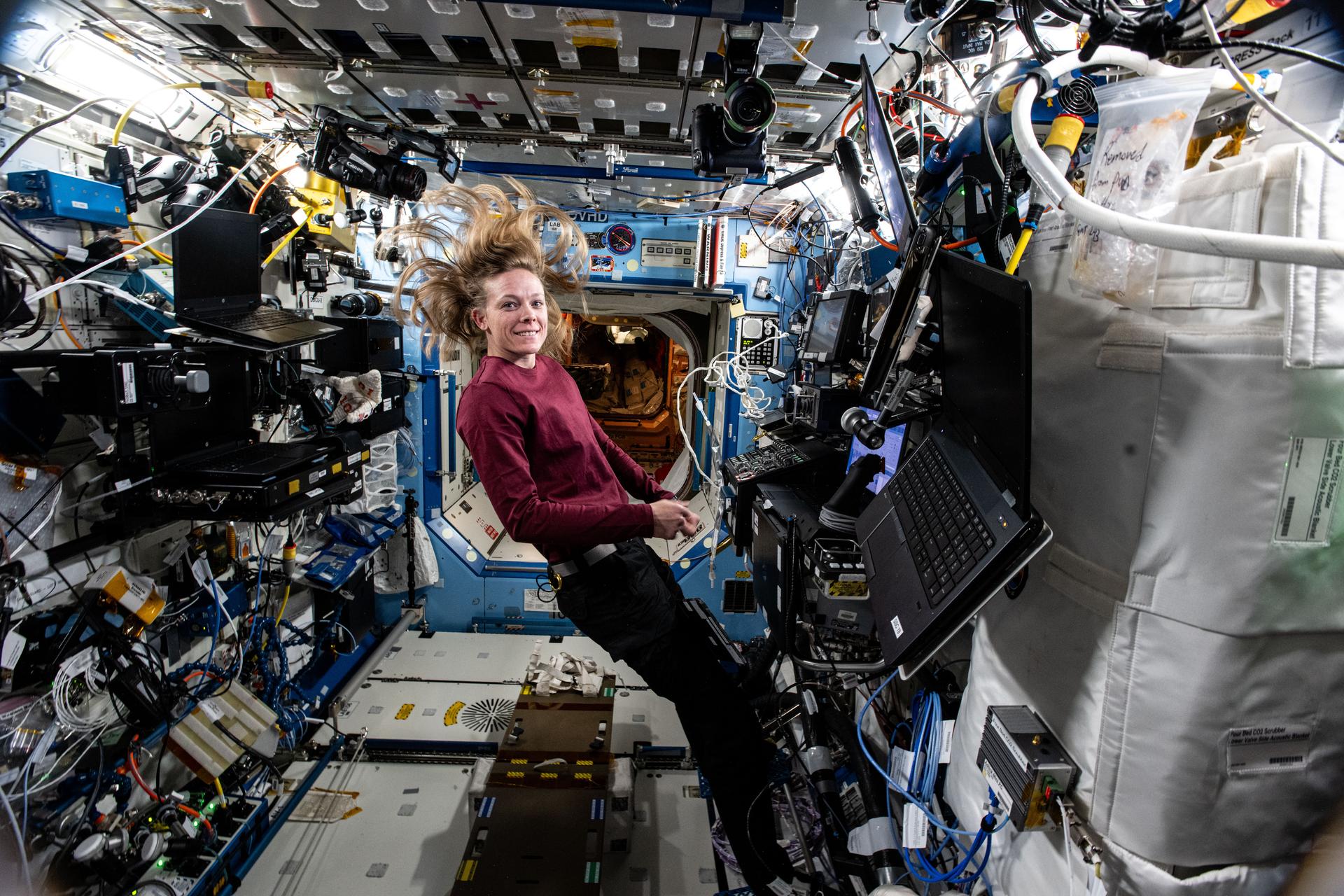Wednesday Boasted Health Scans in Space and More Dragon Cargo Stowage and Advanced Science Experiments for the Expedition 73 Crew

The International Space Station‘s Expedition 73 crew was busy this Wednesday with completing health scans, transferring more dragon cargo stowage, and carrying out additional advanced science experiments.
Three NASA Flight Engineers Nichole Ayers, Anne McClain, Jonny Kim and JAXA (Japan Aerospace Exploration Agency) astronaut and station commander Takuya Onishi spent considerable time on Wednesday working on cargo stowage inside SpaceX’s Dragon spacecraft that arrived on April 21 as part of the 32nd commercial resupply services mission for NASA.
McClain, Ayers, and Onishi also collectively received medical scans via the Health Maintenance Systems (HMS) which provides in-flight preventive medicine, diagnostic and therapeutic care, and routine treatment for the majority of medical conditions expected to be encountered while in space. They each received their own Venous Thromboembolism (VTE) Scan of the neck, clavicle, shoulder, and behind the knee.
Ayers worked through various steps replacing and installing the crystallizer in the Advanced Space Experiment Processor Industrial Crystallization Cassette. Kim was photographing Ayers work with the ADSEP-4 for historical documentation. Ayers also guided an eye ultrasound.
McClain continued her work with the Bio-Monitor garment and headband from Monday. She reapplied the electrode lubricant on the electrocardiogram electrodes, then transferred data to the ground, and finally removed the garment and headband upon the session’s competition. McClain also returned to her work recording the progress of tomato plant growth as part of a space agricultural study.
Onishi also recorded data on the station’s environment for the student coding experiment AstroPi after he set up the Nikon z9 camera. Later he docked the Japanese Experiment Module camera Robot 2 and performed a platform checkout.
Onishi and Kim spent some time on in-flight station maintenance. Onishi worked to reinforce video cables to while Kim performed visual inspections of various parts of the space station.
Kim also terminated the autocycle on spacesuit batteries in the Battery Stowage Compartment. He later went on to perform a routine drying agent pack swap on the Glacier2. GLACIER provides a double middeck-locker-size freezer/refrigerator for a variety of experiments that require temperatures ranging from +4 °C (39 °F) and -160 °C (-301 °F).
The station’s three cosmonauts Sergey Ryzhikov, Alexey Zubritskiy, and Kirill Peskov worked on space station maintenance in the Russian segment. Peskov and Zubritskiy also worked specifically on water maintenance. Peskov continued his work with Potable water with the Water Process Assembly, while Zubritskiy was ensuring the maintenance of coolant and working with regeneration of micro purification systems with water transfer.
Learn more about station activities by following the space station blog, @space_station and @ISS_Research on X as well as the ISS Facebook and ISS Instagram accounts. Get the latest from NASA delivered every week. Subscribe here: https://www.nasa.gov/subscribe.


























